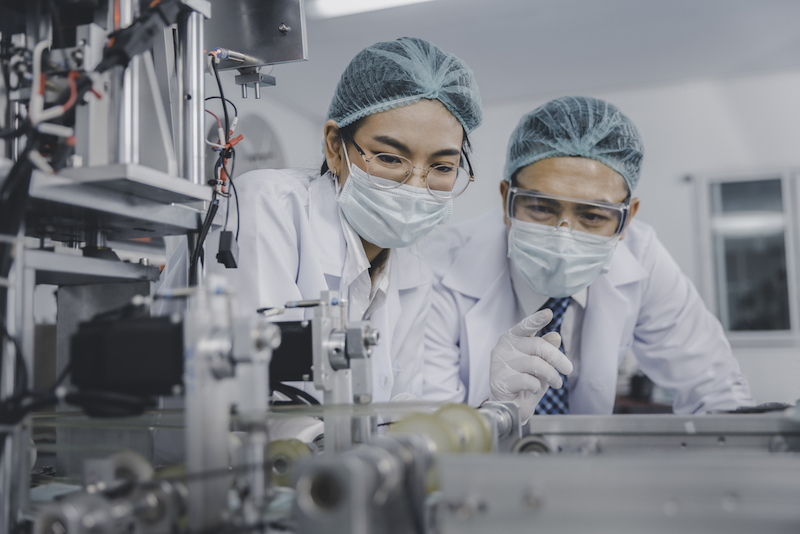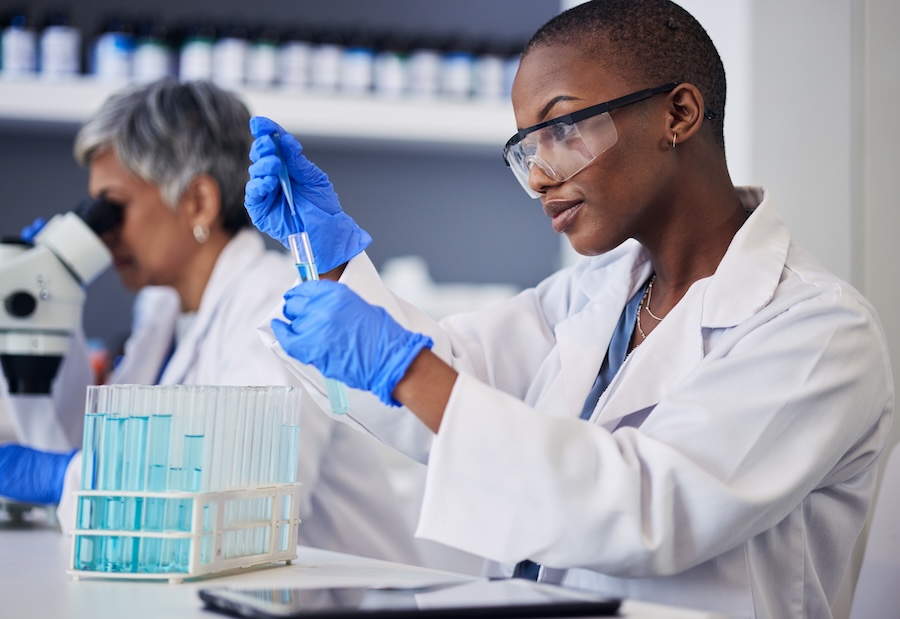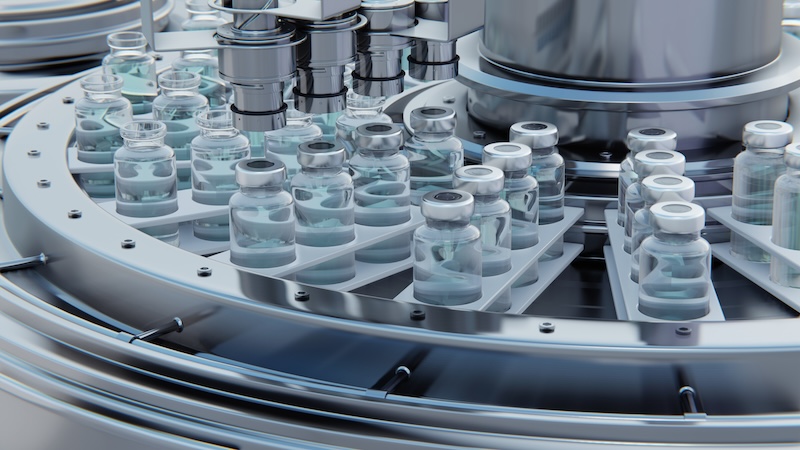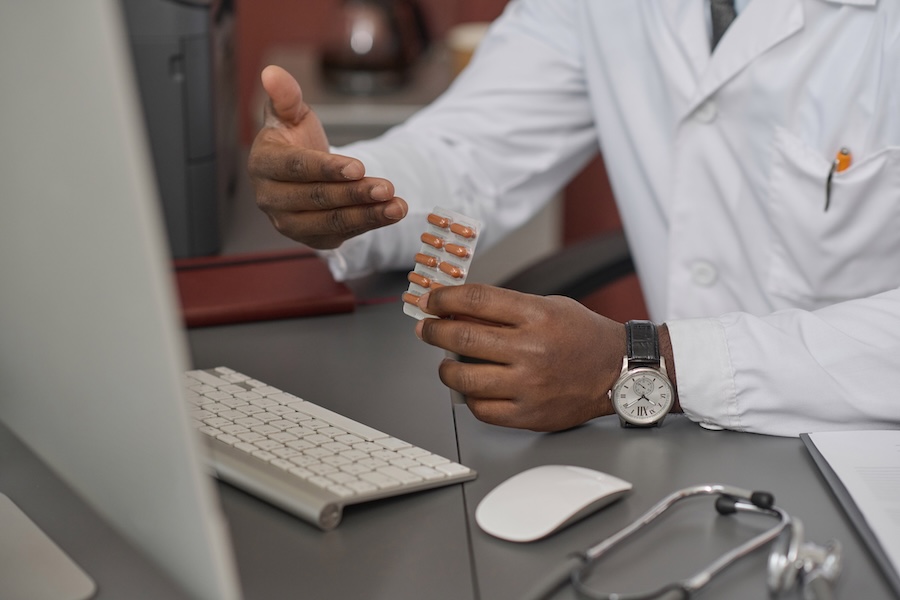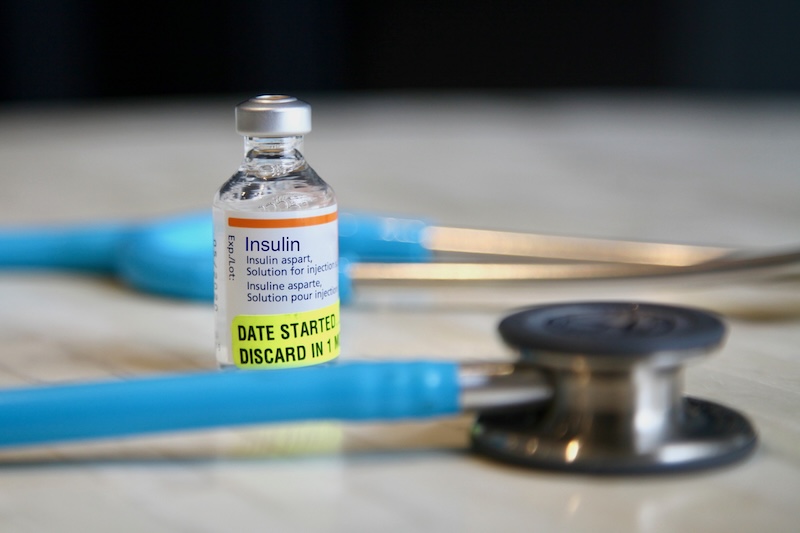What Is Pharmaceutical Packaging?
Pharmaceutical packaging refers to the process, materials, designs, and systems that package, label, and distribute drugs in a variety of healthcare markets.
With such a highly regulated industry, healthcare organizations and pharmacies must use specific packaging that meets the requirements set by regulatory authorities in the United States, such as the Food and Drug Administration (FDA).
These regulations along with recent trends and changes in the healthcare industry have led to increasing demand for safe, efficient, and sustainable packaging.
Manufacturers focus on meeting these demands by optimizing the packaging materials and equipment that play a part in the packaging process. Let’s take a closer look at the development of the industry, as well as the solutions pharmaceutical packaging manufacturers bring to the market.
How to Optimize the Packaging Process?
Optimizing the packing process involves conducting market research, evaluating case studies, and taking other steps to provide cost-effective packaging methods that support improved patient safety.
In drug development, a pharmaceutical company’s regulatory affairs must approve products based on strict safety standards. In product development for pharmaceutical packaging, the process is similar. A packaging manufacturer must ensure that their product packaging meets each U.S. regulatory requirement.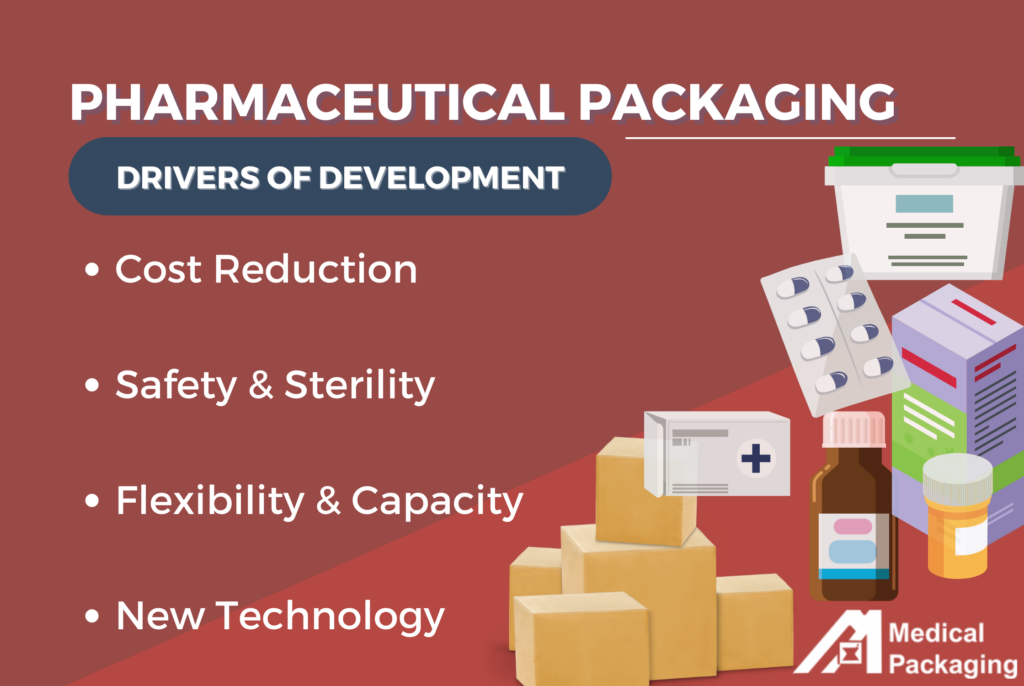
Drivers of Development in the Pharmaceutical Packaging Market
Technology advancements and continual optimization efforts result from a variety of wants, needs, and regulations within specific care markets. Let’s look at some of those key drivers of development in pharmaceutical packaging:
- Cost Reduction: With the responsibility of allocating and managing such important resources, pharmaceutical executives will look to reduce costs wherever possible. Packaging companies are pressed to provide the most efficient equipment and materials that will increase the profitability of their customers.
- Safety and Sterility: The pharmaceutical market places a high level of importance on safety and sterility. This trickles down to the packaging process and has always been a key component in the industry. In recent years, regulations and standards have led many organizations to focus on utilizing safer, more efficient ways to package medications. These regulations are constantly changing and updating, making it important for pharmacies to use up-to-date methods.
- Flexibility and Capacity: Having more responsive production processes and delivery systems are necessary to meet unpredictable volumes and maintain efficient operations. The increasing demand for individualized medicine has created methods such as the unit dose supply to reduce any medication mistakes and save valuable time.
- New Pharmaceutical Packaging Technology: With the introduction of AI and other tech advancements, healthcare packaging has responded with smart packaging. By using barcodes, radio frequency identification tracking chips, and responsive packaging medication safety and supply chain management are simplified.
Types of Drug Packaging
Pharmaceutical product packaging can be classified under three levels: Primary, secondary, and tertiary. The type of packaging and relevant stakeholders will depend on where in the distribution process you find a specific medication.
Primary Packaging
The main purpose of primary packaging is product protection and safety from external factors. This type of packaging must meet each U.S. regulatory requirement to protect the product from tampering or contamination to ensure that it can reach its shelf life instead of expiring at an earlier date. For example, primary packaging in North America includes child-resistant packaging for medications in bottles and other types of containers to prevent children from being able to open them.
Labels play an important role in primary packaging. Various factors are considered for medication labels, and each label will differ in many ways including the type, dose, patient, etc. Efficiency and accuracy in the labeling process are vital.
Different types of primary packaging include:
- Blister packs
- Prefilled syringes
- Vials
- Plastic bottles
Blister packaging is commonly used for capsules and tablets, while bottles, syringes, and vials are typically used for liquid medications. These types of packaging are designed to prevent medications from spoiling, harboring bacteria, or developing other problems that affect shelf life and usage.
Secondary Packaging
Secondary packaging refers to the product packaging that is used for storing or grouping multiple primary packages. This packaging will secure various components and/or units within a facility. Examples of secondary packaging include:
- Boxes
- Cartons
- Injection trays
- Shipping containers
Secondary packaging can be used to keep primary packages organized and make it easier to store them. This type of packaging can also provide added product protection. A pharmaceutical company might use secondary packaging to group primary packages together before shipping them. Pharmacies and other facilities might store medications in secondary packaging until they are needed.
Tertiary Packaging
Tertiary packaging refers to the packaging that is used to ship products in bulk. This type of packaging is used for shipping and handling to facilities that store or distribute large quantities of medication. Different components of tertiary packaging that are used in the pharma industry include:
- Large shipping containers
- Barrels
- Edge protectors and other packaging that helps cushion packages as needed
MPI’s Packaging Solutions
MPI has been providing top-quality primary and tertiary products since 1971, constantly innovating and growing with the pharmaceutical packaging market. As a manufacturer of unit dose medication and pharmaceutical packaging and labeling systems, equipment, barcode labeling software, and MPI-certified consumable materials, our products are categorized as a primary packaging solution for a variety of healthcare markets. These products include:
Oral Solid Packaging Systems
Our oral solid packaging systems include:
- Auto-Print®: This barcode and packaging system can package at speeds of 60-unit dose packages per minute.
- Express 90: This packaging system can package at speeds of 90-unit doses of oral solid medications per minute.
- Oral Solid Feeder Attachment: This is used to load bulk medication into the feeder for improved speed and efficiency.
- Canister Feeder Attachment: This attachment fills prescription dose medications using canisters.
Oral Liquid Packaging Systems
Our oral liquid packaging systems include:
- Fluidose®: This unit dose packaging system can fill and seal liquid medication at 22 doses per minute.
- Auto-Draw®: This oral syringe filling system provides improved accuracy in dose packaging for liquid medications.
- FD-Pharma®: This oral liquid cup packaging system is designed for managing lower to full production volumes.
Overwrapping Systems
Our overwrapping systems include:
- Pharmacy Accessory Bagging System: This system handles barcoding for packaging and can seal up to 35 bags in a minute.
- Auto-Print® Max Bagger: This system can fill 30 bags per minute with the use of automation technology.
Labeling Systems
Our labeling systems include:
- Auto-Wrap®: This machine can wrap a label around a syringe at the rate of up to 20 syringes in a minute, resulting in greater speed and efficiency.
- Pharmacy Accessory Label Printer: This system can print barcodes and labels for a wide range of packaging, including vials and ampoules.
How the Unit Dose Supply Method Has Advanced the Industry
While pharmaceutical packaging varies from one care setting to the next, all require a dedication to ensuring compliance for regulatory purposes and patient safety.
The need for customized and efficient solutions is prominent in every care market. Overall, a shift to using unit dose packaging solutions has provided greater efficiency for various pharmaceutical applications such as hospitals, long-term care facilities, repackagers, and specialty pharmacies.
The Unit Dose Supply Method has been an innovative solution to reduce medication mistakes while also saving time for patient care. The method itself delivers the recommended dose of a given medicine to a specific patient at a particular time.
This can be compared to previous approaches where each dose of prescription medicine is packaged separately in a ready-to-administer form. To read more about the Unit Dose Supply method and the advantages it brings to the industry, check out our blog post, Understanding the Unit Dose Supply Method.
Relevant Care Settings
Pharmaceutical packaging is used in a wide range of care markets in the healthcare industry, from hospitals to specialty pharmacies. The development of packaging requires pharmaceutical packaging manufacturers to meet all requirements and regulations for medications that are sent to various care settings.
Hospitals, Acute Care Facilities, & IDNs
You’ll find hospitals, acute care facilities, and IDNs ranging in a variety of sizes and scopes. With more comprehensive healthcare services, we offer a full range of oral solid and liquid medication packaging and materials.
With such large organizations, you can imagine how complex communication can be between departments, and how vital efficiency is to get the proper care to the patients. Pharmaceutical packaging is a prime example of a large-scale process within these facilities. With unique packaging needs and a wide range of requirements, the packaging process is an essential part of operations, getting the right medication to the right individuals.
Long-Term Care and Extended Care Facilities
Medication is a huge part of treatment for patients with long-term or extended care. These organizations typically require pharmaceutical packaging for smaller or individualized medications for residents. Depending on the size of the facility, packaging needs might be a lower volume compared to large hospital systems.
You’re likely to find retail pharmacies that specifically serve long-term care facilities. These pharmacies need to use specific medication packaging and labeling machines and materials to maintain compliance with the CMS-mandated short-cycle dispensing model in LTC/EC pharmacy environments.
Pharmaceutical Repackagers
Medication repackagers must follow strict guidelines proving that their products are packaged in safe sterile conditions. Our dependable sterile packaging is the leader for those in the pharmaceutical packaging industry. Our goal is to simplify your pharmacy processes with the most advanced technology in the industry.
Specialty Pharma
Specialty pharma companies or a contract drug manufacturing organization (CDMO) can handle the innovation, development, and manufacturing of drugs involved with bringing new products to market. An example is biotechnology drugs that may require special ordering, handling, or distribution.
2024 Trends in Packaging
With the Drug Supply Chain Security Act (DSCSA) deadline set to November of 2024, manufacturers, wholesale distributors, dispensers, and repackagers are preparing for process and tracking changes. We’re prepared to see a lot of change within the industry surrounding the implementation of smart packaging, AI, and more technology. To keep up with this fast-paced market, and to adhere to DSCSA guidelines, pharmaceutical companies should focus on:
- Increasing their digital connectivity
- Adding new tracking technology such as barcodes to drug packaging
- Optimizing supply chain management and general efficiency
MPI's Product Portfolio for Pharmaceutical Packaging
MPI offers efficient solutions for pharmacies and other medical facilities that rely on safe, high-quality pharmaceutical packaging. Our commitment to technology and efficiency has advanced the market and continues to exceed the needs of medication packagers in different market segments.
Our Drug Master File: Top-Notch Medication Adherence
The U.S. Food and Drug Administration has accepted our Type III Drug Master File (DMF) submittal. Having a DMF allows MPI to meet the filing and compliance needs of our customers in the pharmaceutical industry at a more rapid speed. It also allows us to fulfill the FDA-compliant liquid cup packaging capabilities for contract drug manufacturing organizations and pharmaceutical drug manufacturers.
With a DMF, we can expedite the application process for New Drug Applications or Abbreviated New Drug Filings. We are also able to offer improved support for our healthcare professionals in terms of technical and regulatory requirement needs.
If you would like additional information on medication packaging solutions, please contact us today. We offer a full line of medical devices for pharmaceutical packaging, including unit dose packaging machines, barcode labelers, and software for label and barcode design. We can assist you in finding the right packaging solutions for your pharmacy or facility.
Resources
MH2U. “3 Levels of the Pharmaceutical Packaging System.” LinkedIn, 13 Oct. 2022, www.linkedin.com/pulse/3-levels-pharmaceutical-packaging-system-mh2u/.
Author links open overlay panelKeisheni Ganeson a, et al. “Smart Packaging − a Pragmatic Solution to Approach Sustainable Food Waste Management.” Food Packaging and Shelf Life, Elsevier, 7 Feb. 2023, www.sciencedirect.com/science/article/abs/pii/S2214289423000212.

